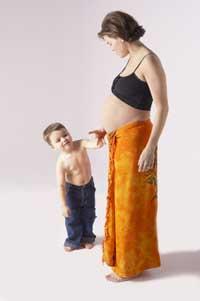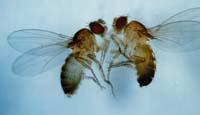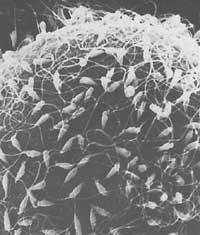A gene to balance the proportion of men and women
2009/02/08 Lakar Iraizoz, Oihane - Elhuyar Zientzia

In one population, usually men and women are in similar proportions, that is, approximately half of the population is male and the other half is female. This proportion is given not only in humans, but also in the populations of the rest of the living beings that have separate sexes.
However, a certain human behavior, the famous sexual division of labor, can make this proportion vary. Such a case is that of wars: traditionally it is men who fight in wars. In the wars that have lasted for a long time and caused many deaths, women have remained in greater proportion in these cities, towns and villages in general.
Maintaining balance
However, nature tends to balance proportions, and it is documented that after a war more children are born in a population and that the proportion between men and women is recovered.

Since they realized that this phenomenon occurs, thinkers and scientists try to figure out what is behind. Of course, the fact of thinking so much has given him all kinds of possible explanations. Some believe that men who have survived the war represent the lost, responding to a call from God. There are others who say that at the turn of the war soldiers have a great sexual passion and that the fact that relations are more frequent causes women to fertilize at a time with a greater probability of having children.
An English researcher studying evolutionary biology has given him an explanation that no one had proposed so far. According to him, behind all this there is a gene that is expressed only in men. This gene seems to have some influence on the sperm produced by men. It seems that the influence of this gene makes some men more willing to have children, others more to have daughters, while others produce in the same proportion sperm that they are going to give to their sons and daughters.
Being a gene, it passes from parents to children. Thus, men with many brothers would tend to have more children and, on the contrary, those who have many sisters would have more daughters.

Likelihood Count
From there, it is a question of probability. Traditionally, men have been sent to the wars of a given age group. Therefore, in families with many men, there was more chance that a child would not go to war. In addition, if a family combatants were many, the probability that one of them would return alive was greater.
Thus, at the end of the war, families with many children are more likely to have a child live than families with very few children. And that is why more children are born, according to this researcher, after a war. In fact, the sons of families with many children would be ‘sons and daughters’, that is, they would have a gene that pushes them to have more children, and at that time they would be more abundant in the population than men ‘alaba-producers’, to equal the proportions of men and women. What strength can a gene have! As long as what this researcher has said is true...
Published in 7K.

Gai honi buruzko eduki gehiago
Elhuyarrek garatutako teknologia






